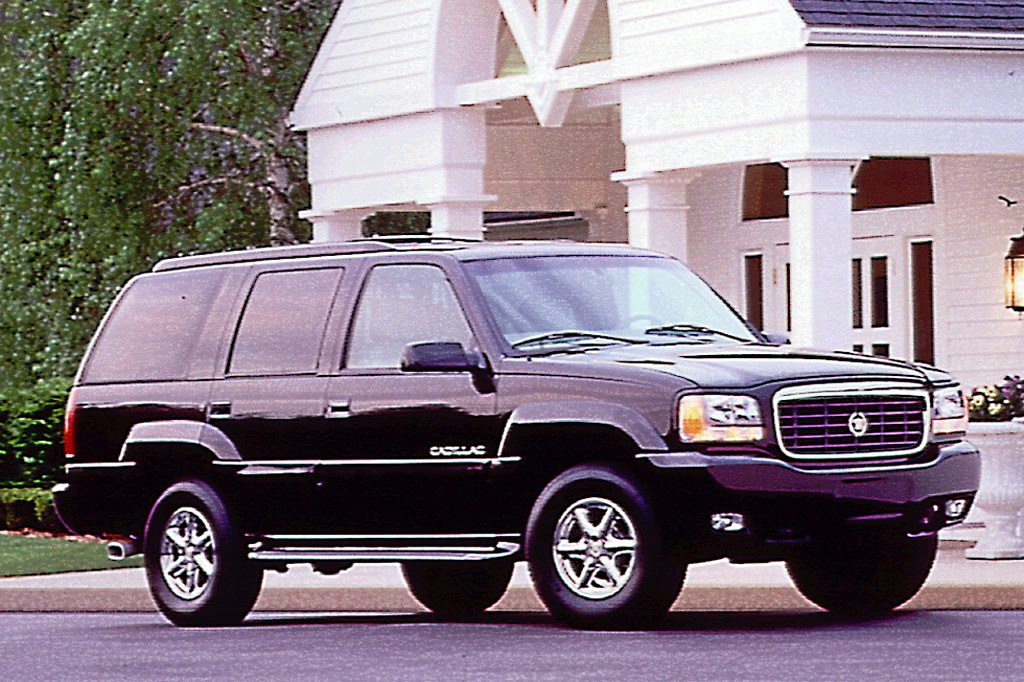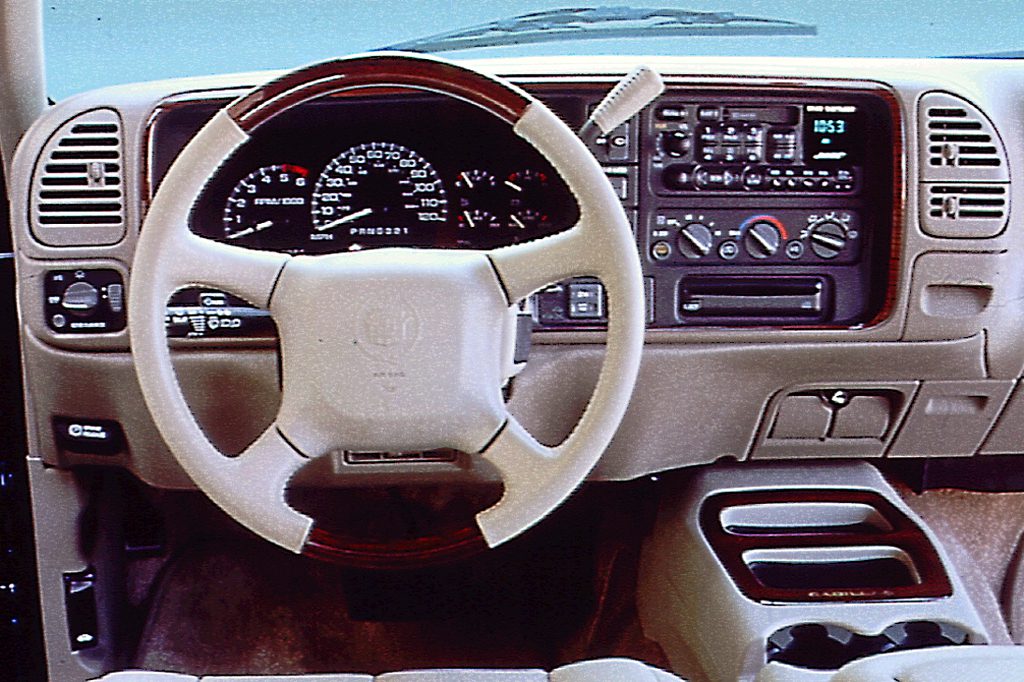| Premium large SUV; Built in USA |
|
|
| Good condition price range: $4,500 – $6,100* |

2000 Cadillac Escalade

2000 Cadillac Escalade interior

2000 Cadillac Escalade

1999 Cadillac Escalade

1999 Cadillac Escalade interior
| Pros: |
|
| Cons: |
|
Escalades came with plenty of standard features and conveniences, but on the whole this sport-utility vehicle feels more like a dashed-together collection of “luxury” SUV cues than an intelligent, cohesive design. For that reason alone, it does not rate a spot on our secondhand shopping list.
Overview
Cadillac’s first truck ever was a response to the success of the full-size Lincoln Navigator sport utility vehicle. Big SUV sales were growing faster in the late 1990s than those of compact and midsize models.
Essentially a gussied-up variant of the GMC Yukon Denali, the four-wheel-drive Escalade also competed against Land Rover’s posh Range Rover and the Lexus LX 470. Familiar styling cues could be seen in the Cadillac-style grille as well as in interior trim, which used real wood and the same leather found in Cadillac passenger cars. At the rear was a drop-down tailgate combined with swing-up glass. (Denalis could be fitted with a split rear door, instead.)
Power came from a 255-horsepower, 5.7-liter V8 engine that drove a four-speed automatic transmission. AutoTrac four-wheel drive can be used on dry pavement, and the Escalade is capable of towing up to 6500 pounds.
Escalades had more standard features than GMC’s Denali, including a wood-rimmed steering wheel and a new version of GM’s OnStar satellite-based information and emergency-assistance system. Substituting a hands-free microphone for the usual cellular phone, it included “reminder services” to track appointments, birthdays and the like.
Yearly Updates
| 2000 Escalade Cadillac’s Escalade kept the basic 1999 design for one more season, as did the GMC Denali and Chevrolet’s Tahoe Z71 and Limited. Redesigned Chevrolet Tahoes and GMC Yukons, on the other hand, got new platforms, styling, and engines. Nothing was new for the second-year Escalade, except that buyers got a choice of a rear liftgate/tailgate or full center-opening doors. Standard equipment included full-time four-wheel drive, a two-speed transfer case, limited-slip differential, antilock braking, daytime running lights, automatic climate control, and rear air-conditioner controls. Escalades were fitted with leather upholstery, cruise control, 10-way power front bucket seats, heated front/rear seats, a Bose cassette/CD player, and a six-disc CD changer. No Escalades were offered for 2001, but a new version debuted as a 2002 model. |
